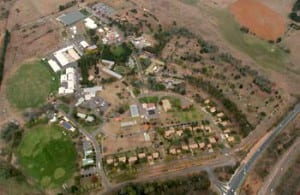Latest News
[Via Satellite 04-06-2015] The Australian government hopes to expedite progress on a military satcom (milsatcom) project that would enable greater use of the United States Wideband Global Satcom (WGS) system that has fallen five years behind schedule. The Joint Project (JP) 2008 Phase 3F – Australian Defence Satellite Communication Capability Terrestrial Enhancement, approved in 2009, supported the delivery of a satellite ground station in Western Australia and an upgrade to the existing Optus C1 Ground Station at HMAS Harman (SGS-H). The completed ground system enables Australian deployed forces using WGS to interface with the Defence Wide Area Network and the Australian Defence headquarters along with support elements. In light of significant delays, the Australian government added JP 2008 Phase 3F to the Projects of Concern list.
According to the Australian Defence Materiel Organisation (DMO), the Projects of Concern process has absolved the troubles affecting 14 different projects with a combined value of more than $11.5 billion. The Australian government uses it as a mechanism for formally identifying underperforming projects and providing them with heightened oversight, scrutiny and assistance from senior stakeholders. Together the DMO and prime contractor BAE Systems will develop an agreed upon remediation plan that incorporates routine updates through regular project reporting and leadership summits.
“The DMO and BAE Systems have been working together for some time to reduce further schedule slippages. However, given the significant challenges still facing the project, adding it to the Project of Concern list was seen as a necessary measure toward remediation,” Harry Dunstall, acting CEO of the DMO, told Via Satellite. “DMO is continuing to work closely with BAE Systems to ensure the capability required by JP 2008 Phase 3F is delivered as soon as possible. Listing JP 2008 Phase 3F as a Project of Concern will provide increased oversight and stakeholder engagement to assist in getting the project back on track.”
Graeme Bent, director of land and integrated systems at BAE Systems, told Via Satellite that this is the first time any organization has implemented U.S. WGS requirements on such a large scale. This caused delivery challenges during the systems engineering process that precedes formal testing.
BAE Systems and Australia increased their cooperation about 18 months ago when the project passed its August 2013 completion date to revise the schedule and promptly respond to challenges. Bent said this collaboration has already begun to bear fruit.
“We’ve been working closely with the Defence Materiel Organisation to deliver the project to its satisfaction and we developed a schedule back in 2013. We’ve actually hit that schedule right up to today, so for the last 15 months or so it has actually been on target,” he said, acknowledging that the DMO’s decision to increase focus on the program will have additional benefits. “The Projects of Concern process gives extra focus to the project to drive it home to a conclusion and we support this process.”
As prime contractor, BAE Systems is responsible for the overall system design, integration, installation and verification of JP 2008 Phase 3F. The company and Australia are jointly responsible for certification of the system. ViaSat completed the manufacturing and testing of three Earth station terminals from a contract awarded in 2009. Bent said the West Satellite Ground Station (SGS West) located in Geraldton is nearly complete.
“We are targeting entering pre-certification trials at the end of March. The system has been through a significant amount of testing and is ready to go into that pre-certification activity. We installed the remote system operating centers at Canberra, which is where headquarters are located, so the system can be operated remotely,” he said.
According to Dunstall, WGS certification of the SGS West element will start later this year following testing of the system. Completion of SGS West is a prerequisite for upgrading HMAS Harman, also known as SGS East. This, he said, is because the Royal Australian Navy’s HMAS Harman system will need to be taken offline for a period of time to install the final upgrades.
“The East system is still supporting operations,” said Bent. “It is going through a number of obsolescence update activities, but it is still being used by the Australian Defence Force (ADF) as part of its communications capability. The program has always been that SGS West has to be completed before we can start working on upgrading SGS East.”
Of the 17 programs added and closed on the Projects of Concern list, 14 were remediated, one reduced in scope and two cancelled. Including the Australian Defence Satellite Communications Capability Terrestrial Enhancement, there are six programs currently on the Projects of Concern list. Dunstall highlighted the Wedgetail Airborne Early Warning and Control program from 2012 and the ANZAC Frigates Anti-Ship Missile Defence from 2011 as two programs previously corrected through the Projects of Concern list that DMO can leverage experience from for the troubled satcom project.
Bent said with the Projects of Concern program, BAE Systems has a set of working groups now at all levels, which include all stakeholders, clarifying the definition of what the outcomes need to be. The company has also employed independent U.S. experts to leverage their experience with WGS certification.
The Australian Defence Force’s partnership with the U.S. on WGS and Ultra-High Frequency (UHF) Satcom is the nation’s most important satcom agreement, according to an ADF spokesperson. The majority of ADF’s investments in milsatcom today go toward the delivery of terminals and ground infrastructure in order to exploit the already orbiting space segment, the spokesperson said.
Get the latest Via Satellite news!
Subscribe Now